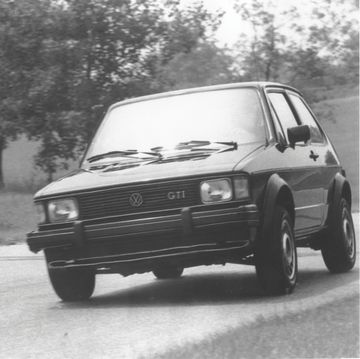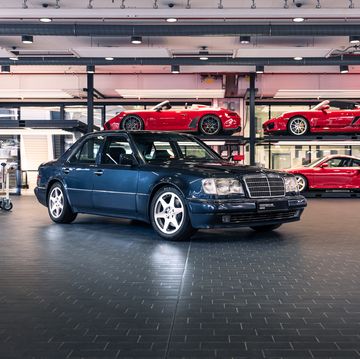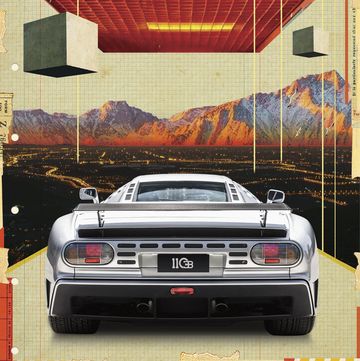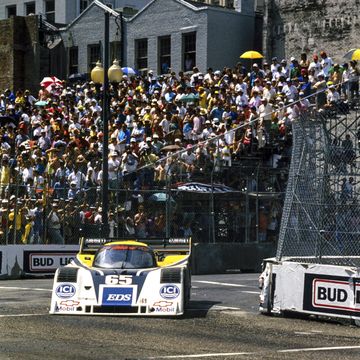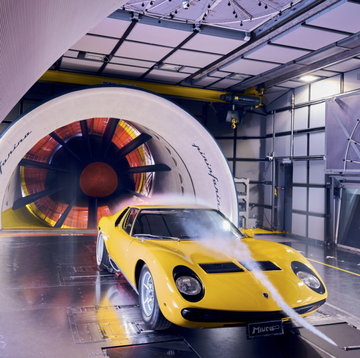Reports of unconscionably valuable vehicles—Bugattis, Ferraris, Delahayes, Lamborghinis—found stuffed into barns by former owners, heaped over with decades of hay and decay, pop up with some regularity in automotive media. Such stories even tend to make the leap into the mainstream press, containing as they do a compelling core message. “It’s thrilling. It’s the search for buried treasure. Who doesn’t love that?” says Miles Collier, the collector behind the Collier Collection in Florida, endower of the Revs Institute for the study of the automobile in culture, and author of the forthcoming book The Archaeological Automobile. “It goes back to the Sleeping Beauty legend. There she is, after all these years, magically entombed, requiring only the kiss of the conservators and maybe a tiny bit of restoration to be this magnificent thing again.”
This story originally appeared in Volume 6 of Road & Track.
SIGN UP FOR THE TRACK CLUB BY R&T FOR MORE EXCLUSIVE STORIES
But most “barn finds” are anything but seven- or eight-figure masterpieces awaiting revival by a sovereign smooch. “It’s a catchall phrase to capture all the vehicles that have been neglected and abused and left in whatever situation,” says Tom Cotter, who stars in a YouTube series called Barn Find Hunter and has written many books on the subject. “It’s a car that’s been forgotten.”
So, if you happen to open up a barn, or a garage, or a storage facility shed, or a shipping container and discover a beat-up-looking old vehicle in there, how can you tell whether you have a legitimate barn find or just a pile of rusty parts? And what should you do with it? Well, the answer is subjective, and philosophical.
“Many times, ‘barn find’ is more of a palatable term for a deteriorated and neglected old banger that has major problems,” Collier says. “The reality is, most cars end up in barns because somebody beat the snot out of them and broke them.” These cars, according to Collier, were often “thought so little of that they weren’t even worth toting off to the junkyard.”
However, sometimes these very same vehicles reveal something glorious about our automotive and human past. “Is neglect a bad thing?” asks Casey Maxon, a historian at the Historic Vehicle Association, a not-for-profit that, in association with the Department of the Interior, organizes a registry for significant exemplars of automotive heritage—like the National Register of Historic Places, but for cars. “There are plenty of Ferrari 250 California Spiders that are perfectly restored, and there are some that are unrestored perfectly. But to see a 250 Cal Spider that’s neglected, to me that’s fascinating. It’s a juxtaposition. Here you have this extraordinary machine. But at one point it was just a car, and it was used in period, driven hard and in anger.”
Maxon posits that for millennial enthusiasts like himself, who never witnessed these cars being used as transportation, in-period-abused vehicles like this enhance accessibility and tangibility. “Seeing the rough cars kind of allows us to connect to them a little better than we could to a pristine artifact,” he says. “It makes them more real.”
Collier concurs, regarding the inherent value in preserving what he calls a vehicle’s “entropic narrative,” its visible history of decay. In his collection is an extremely authentic and untouched 1909 Ford Model T. “The reason this car survived in such original condition was because somebody broke it really early, like 1911,” he says. “So it has components on it that never survived on other Model Ts, because they were superannuated by more updated, better-technology replacement parts.”
Survivor vehicles like these—which display on their bodies, and in their interiors and mechanical bits, decades of life and use—appeal to us, and have relevance for the collector-car world, because they demonstrate what Collier calls “their artifactual nature.”
“Like people, every car comes out of the factory pretty much looking the same and, over the next X number of years, begins to develop individuality and character,” he says. “And the thing that makes old cars fascinating, and the thing that makes old cars important, is that they ultimately embody a sense of history, a sense of contact with people in the past. That they are, in fact, a physical memory of the past.”
If that car is subjected to what Collier calls “an anonymizing restoration,” it loses all of this history. Like someone entering the witness protection program, its past connections, its relationships to time and people and places, are eradicated, ground away. “The car may become typologically accurate—removed of anything that wasn’t factory-typical,” says Collier. “But what you end up with is a sort of Stepford Wife of a car.”
So, despite their filth, their imperfections, and their neglect, these barn-preserved vehicles should be celebrated. “In the world of collecting, of whatever object it may be, that field eventually recognizes the importance of original, untouched, native-condition artifacts,” Collier says. “And that’s because that’s the configuration of the artifact that tells us the most about the past, that connects us to generations of people. This is a profound and exciting thing.”
SIGN UP FOR THE TRACK CLUB BY R&T FOR MORE EXCLUSIVE STORIES
Brett Berk (he/him) is a former preschool teacher and early childhood center director who spent a decade as a youth and family researcher and now covers the topics of kids and the auto industry for publications including CNN, the New York Times, Popular Mechanics and more. He has published a parenting book, The Gay Uncle’s Guide to Parenting, and since 2008 has driven and reviewed thousands of cars for Car and Driver and Road & Track, where he is contributing editor. He has also written for Architectural Digest, Billboard, ELLE Decor, Esquire, GQ, Travel + Leisure and Vanity Fair.



